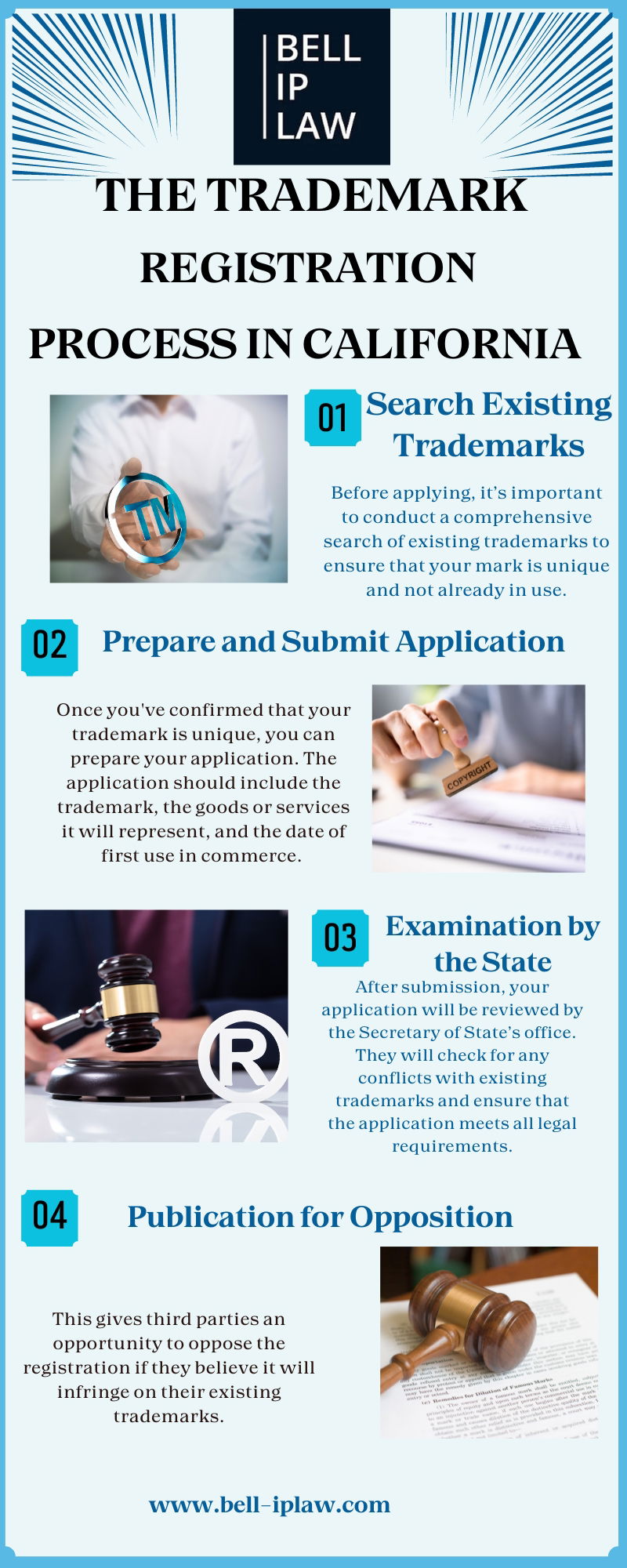The Key Steps in the Trademark Registration Process in California
Trademark law plays a crucial role in protecting businesses and their intellectual property in California. As a vital part of a company's branding strategy, trademarks help consumers identify and distinguish goods and services. In California, which is home to a diverse range of industries, including technology, entertainment, and agriculture, understanding trademark law is essential for both businesses and consumers.

Trademark law California is primarily governed by both federal and state statutes. The federal law, outlined in the Lanham Act, provides a uniform framework for trademark protection across the United States. However, California also has its own trademark laws that complement federal regulations. Under California law, trademarks can include any word, phrase, symbol, design, or combination thereof that identifies and distinguishes the source of goods or services. To gain protection, a trademark must be distinctive and not merely descriptive or generic.The importance of trademarks cannot be overstated.
They serve as a badge of origin, allowing consumers to make informed purchasing decisions based on brand reputation and quality. For businesses, a strong trademark can build customer loyalty and market value. Conversely, unauthorized use of a trademark can lead to confusion among consumers and dilute the brand's identity. Therefore, it is crucial for businesses to understand how to protect their trademarks and avoid infringing on others' rights.
Types of Trademarks
In California, there are several types of trademarks that businesses can register:
- Standard Character Marks: These protect words, letters, and numbers without regard to any specific font, style, size, or color.
- Design Marks: These protect logos, symbols, or designs that represent a brand.
- Service Marks: Similar to trademarks, service marks specifically identify services rather than goods.
- Collective Marks: These are used by members of a collective group or organization to indicate membership or origin.
- Certification Marks: These certify the quality or characteristics of goods or services.
The Trademark Registration Process in California
Registering a trademark in California involves several steps. Here’s a simplified overview of the process:
- Search Existing Trademarks: Before applying, it’s important to conduct a comprehensive search of existing trademarks to ensure that your mark is unique and not already in use. This can be done through the California Secretary of State’s trademark database and the U.S. Patent and Trademark Office (USPTO) database.
- Prepare and Submit Application: Once you've confirmed that your trademark is unique, you can prepare your application. The application should include the trademark, the goods or services it will represent, and the date of first use in commerce. In California, you can file your application online through the Secretary of State’s website.
- Examination by the State: After submission, your application will be reviewed by the Secretary of State’s office. They will check for any conflicts with existing trademarks and ensure that the application meets all legal requirements.
- Publication for Opposition: If your application passes the examination, it will be published in the California Trademark Journal. This gives third parties an opportunity to oppose the registration if they believe it will infringe on their existing trademarks.
- Registration: If no opposition is filed or if any opposition is resolved in your favor, your trademark will be registered. You will receive a certificate of registration, granting you exclusive rights to use the trademark in California.
Maintaining Trademark Rights
Trademark rights can last indefinitely, as long as the mark is being used in commerce and is renewed periodically. In California, trademark registration must be renewed every ten years, along with proof of continued use. Additionally, businesses should monitor the market for potential infringement and take action if they discover unauthorized use of their trademark. Failure to enforce trademark rights can result in loss of protection.
Trademark Infringement and Enforcement
Trademark infringement occurs when another party uses a trademark that is similar enough to cause confusion among consumers. Businesses must actively protect their trademarks to avoid dilution or loss of rights. If a trademark is infringed upon, the owner can take several actions:
- Cease and Desist Letter: The first step is usually to send a cease and desist letter to the infringer, requesting that they stop using the trademark.
- Negotiation and Settlement: If the infringer is willing, parties can negotiate a settlement that may involve licensing agreements or other arrangements.
- Litigation: If negotiation fails, trademark owners may pursue legal action in court. Successful litigation can lead to injunctions against the infringer and monetary damages.
International Trademark Considerations
With the growth of global trade, many California businesses also seek protection for their trademarks internationally. The Madrid Protocol is an important treaty that allows trademark owners to file a single application for protection in multiple countries. This can simplify the process and reduce costs for businesses looking to expand their brand globally.
Trademark law in California is a complex but essential aspect of running a successful business. Understanding the various types of trademarks, the registration process, and the importance of enforcement can help businesses protect their intellectual property and maintain a competitive edge in the marketplace.
As industries continue to evolve, staying informed about trademark law will remain crucial for entrepreneurs and established businesses alike. By proactively managing their trademarks, companies can safeguard their brands and foster trust with consumers.If you're considering trademark registration or facing issues related to trademark infringement, consulting with an attorney specializing in intellectual property law can provide valuable guidance and ensure that you navigate the complexities of trademark law effectively.
